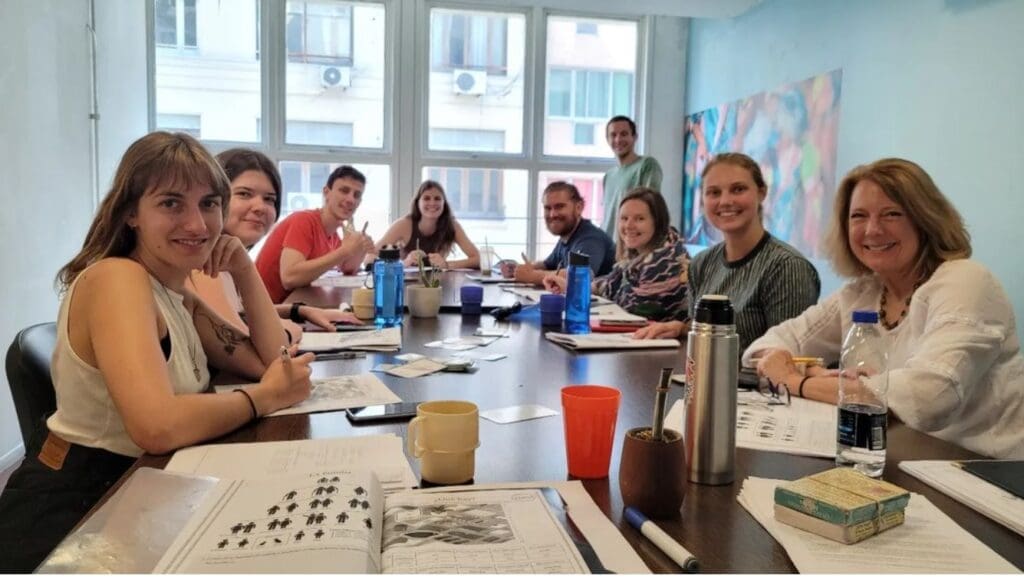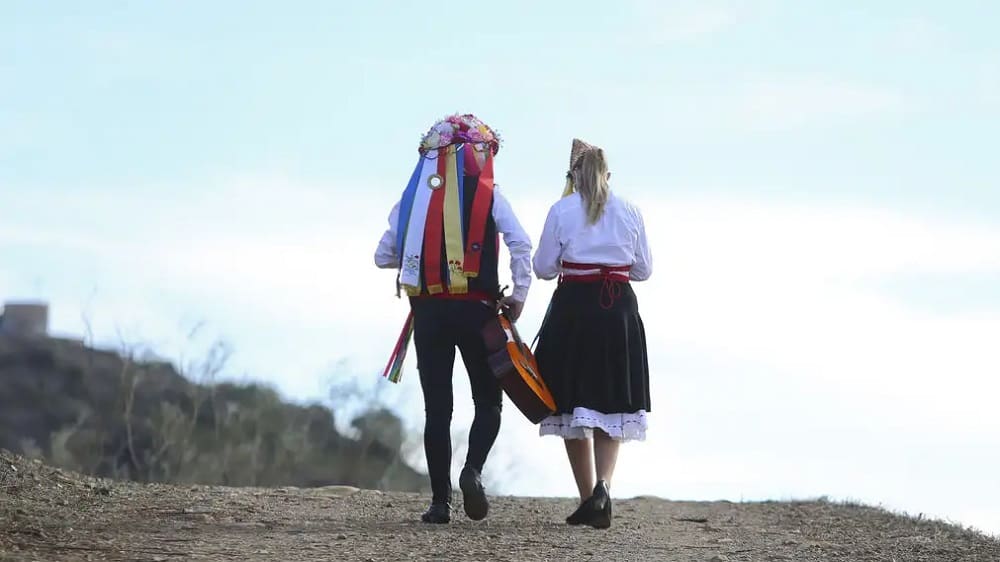

Tony Bryant
Table of Contents
- Origins of Verdiales: A Dance Rooted in History and Tradition
- Ignite Your Passion for Spanish with Us!
- Instruments and Performers: The Heartbeat of Verdiales
- Mastering the Moves: The Art of Dancing Verdiales
- Celebrations and Festivals: Verdiales in Full Bloom
- FAQs about Verdiales
In the heart of Spain’s sun-drenched Andalusia lies Málaga, a province teeming with history, culture, and a dance form that has stood the test of time – the verdiales. This traditional dance, with its rhythmic beats and soulful melodies, is not just a performance; it’s a celebration, a story, a legacy. As we journey through the mountain villages of Málaga, we’ll uncover the origins, significance, and enduring charm of the verdiales, a dance that is as much a part of Andalusian identity as the olive groves that dot its landscape.
Origins of Verdiales: A Dance Rooted in History and Tradition
The verdiales, a dance form that resonates with the soulful melodies and rhythms of Andalusia, traces its origins back to the verdial olive-farming regions of Málaga. This particular area, known as Los Verdiales, is renowned for its cultivation of verdial olives, which have become synonymous with the region’s identity.
But the verdiales is more than just a namesake of the olives. It is believed to have deep Moorish roots, a testament to the rich tapestry of cultures that have left their mark on Andalusia over the centuries. The Moors, who ruled the Iberian Peninsula for nearly 800 years, brought with them a plethora of artistic, architectural, and musical influences. The verdiales dance is thought to be a reflection of these influences, intertwining Moorish rhythms with indigenous Spanish traditions.
Ignite Your Passion for Spanish with Us!
Are you ready to dive into a new language and immerse yourself in a vibrant culture? Whether you’re dreaming of the bustling streets of Buenos Aires, the sun-soaked beaches of Malaga, or the convenience of learning from the comfort of your own home, we’ve got you covered!


Experience Buenos Aires
Join us at our language school in Argentina. Immerse yourself in the local culture, explore the city’s rich history, and let the rhythm of Buenos Aires fuel your language learning journey.
Discover Malaga
Picture yourself learning Spanish under the warm Andalusian sun. Our Spanish school in Malaga offers a unique blend of high-quality education and a relaxed, beach-side lifestyle. It’s more than just a language course, it’s the adventure of a lifetime!
Learn Spanish Online
If travel isn’t on the cards right now, don’t worry! Our online Spanish classes bring the language to you. Enjoy interactive, engaging lessons with our experienced teachers, all from the comfort of your own home.
While not strictly categorized under the flamenco umbrella, the verdiales shares a kindred spirit with the fandango, another traditional Spanish dance form. In fact, many historians and cultural enthusiasts consider the verdiales to be the prototype or precursor to the fandango. This connection underscores the dance’s significance as one of the oldest, if not the oldest, surviving styles of fandango.
The verdiales is not just a dance; it’s a living tradition that has been passed down through generations. Performed by a group known as the “Panda de Verdiales,” the dance is brought to life with a medley of instruments. From the strumming of guitars and the melodies of violins to the rhythmic beats of tambourines and the exotic sounds of the Bandurria—an Arabic instrument akin to the mandolin—the verdiales is a symphony of sounds that captures the essence of Andalusian culture.


As the years have passed, the verdiales has evolved, with different regions of Málaga adding their unique flavors and styles to the dance. Yet, its core essence remains unchanged—a celebration of Andalusia’s rich history, diverse cultures, and the enduring spirit of its people.
Instruments and Performers: The Heartbeat of Verdiales
The verdiales, while deeply rooted in tradition, is brought to life by the talented performers and the diverse array of instruments they wield. These instruments, each with its unique timbre and history, come together to create the captivating soundscape that defines the verdiales.
Panda de Verdiales: Central to the performance of verdiales is the ensemble known as the “Panda de Verdiales.” This group, often comprising seasoned musicians and passionate enthusiasts, is the driving force behind the dance. Their synergy and understanding of the dance’s nuances ensure that every performance is a unique experience.
Guitars: The guitar, a staple in many Spanish musical traditions, plays a pivotal role in the verdiales. Its strings resonate with the melodies that form the backbone of the dance. The strumming patterns, ranging from gentle plucks to vigorous strums, add depth and rhythm to the performance.
Also read our blog about: The Enchanting World of Spanish Guitar: Acoustic Guitar and Playing Techniques
Violins: The violin introduces a layer of melody that weaves seamlessly with the guitar’s chords. Its high-pitched tones and the ability to produce long, sustained notes add a touch of elegance and emotion to the verdiales.
Drums and Tambourines: Rhythm is at the heart of any dance, and in verdiales, this rhythm is maintained by the drums and tambourines. These percussion instruments set the pace, with their beats guiding the dancers’ steps and movements.
Bandurria: Perhaps the most exotic of the instruments in the ensemble is the Bandurria. With its origins tracing back to Arabic culture, the Bandurria is similar to the mandolin. Its double strings produce a sound that is both rich and resonant, adding a touch of mystique to the verdiales.
Colored Ribbons and Attire: Beyond the instruments, the performers themselves are a sight to behold. Adorned with colorful ribbons pinned to their traditional attire, they bring a visual vibrancy to the performance. These ribbons, often in bright hues, flutter and dance as the performers move, adding a layer of visual appeal to the auditory experience.
Mastering the Moves: The Art of Dancing Verdiales
The verdiales, with its rhythmic beats and soulful melodies, is not just about the music; it’s a dance that tells a story with every step, twirl, and gesture. For those intrigued by its charm and eager to immerse themselves in its beauty, understanding the dance’s fundamental steps and movements is essential.
The Basic Stance: Like many traditional dances, the verdiales requires a poised and upright posture. Dancers must maintain a straight back, with shoulders relaxed and head held high. This stance serves as the foundation upon which all other movements are built.
Footwork: The footwork in verdiales is a blend of quick, nimble steps and graceful, flowing movements. Dancers often alternate between tapping their heels, shuffling their feet, and taking elongated strides. The key is to synchronize these steps with the rhythm of the music, ensuring that each movement aligns perfectly with the beats.
Hand Gestures: The hands play a pivotal role in expressing the emotions and narratives of the verdiales. Dancers use their hands to create elegant patterns in the air, often twirling them or clapping to the rhythm. These gestures, when combined with the footwork, add depth and dimension to the dance.
Also read our blog about: Fandango: Spain’s Passionate Rhythm
Partner Dynamics: Verdiales is often danced in pairs, making the interaction between partners crucial. Dancers must maintain eye contact, ensuring they are in sync with each other’s movements. There’s a playful exchange of energy, with partners often mirroring each other’s steps or engaging in call-and-response patterns.
The Leap: One of the signature moves of the verdiales is the leap. Dancers, with a burst of energy, jump off the ground, adding a dynamic flair to the performance. This leap, often executed during the climax of the music, is a testament to the dancer’s agility and prowess.
Embodying the Spirit: Beyond the steps and movements, the verdiales is about embodying the spirit of Andalusia. Dancers must immerse themselves in the music, allowing it to guide their movements and expressions. It’s about feeling the emotions, be it joy, sorrow, or passion, and conveying them through the dance.
Celebrations and Festivals: Verdiales in Full Bloom
The verdiales, while a captivating dance and musical form in its own right, truly comes alive during the numerous celebrations and festivals dedicated to it in Málaga. These events, steeped in tradition and bursting with color and energy, showcase the verdiales in all its glory, bringing together communities in a shared celebration of their heritage.
Patron Saints Day – December 28th: One of the most significant dates in the verdiales calendar is the 28th of December, known as the Patron Saints Day. On this day, various parts of Málaga, including Alora, Almogia, Puerto de la Torre, and Torremolinos, become hubs of verdiales performances. Musicians and dancers, adorned in traditional attire and colorful ribbons, take to the streets, performing and competing in various styles of verdiales, namely Comares, Los Montes, and Almogia. The air is filled with the rhythmic beats of tambourines, the strumming of guitars, and the melodious notes of violins, creating an atmosphere of joy and celebration.
Feria Week in Málaga: Another highlight in the verdiales calendar is the feria week in Málaga. During this week-long celebration, the city transforms into a verdiales haven. The streets and plazas resonate with the sounds of the verdiales, as groups of performers showcase their skills, drawing in crowds of locals and tourists alike. The dance, with its vibrant moves and infectious energy, becomes a common sight, with impromptu performances springing up at every corner.
Check our detail blog about: La Feria de Malaga: Complete guide to understand it
Fiesta Major de Verdiales: Held annually on the 28th of December in Puerto de la Torre, the Fiesta Major de Verdiales is perhaps the most anticipated verdiales event. It’s not just a festival; it’s a competition, with various “pandas” or groups vying for the title of the best verdiales performers. The event, which attracts participants and spectators from across the region, is a showcase of talent, passion, and tradition.
Fiesta Tradicional de Verdiales in Benagalbon: Another noteworthy celebration is the Fiesta Tradicional de Verdiales, held in Benagalbon, Rincon de la Victoria. Taking place around the 21st of September, this event is a blend of tradition and modernity, with performers bringing their unique interpretations of the verdiales to the fore.
Mountain Village Celebrations: Beyond the major festivals, the verdiales is an integral part of daily life in the mountain villages of Málaga. Here, the dance is not just a performance; it’s a way of life. Small-scale verdiales festivals, often spanning several hours or even days, are common occurrences, with communities coming together to celebrate their shared heritage.
FAQs about Verdiales
1. What are Verdiales? Verdiales are a traditional folk music and dance style originating from the region around Málaga, Spain. It’s characterized by its lively rhythm, colorful costumes, and festive spirit.
2. How did Verdiales originate? The exact origins of Verdiales are debated, but they are believed to predate and influence Flamenco. The style is deeply rooted in the rural and agricultural traditions of the Málaga mountains.
3. What instruments are used in Verdiales? Common instruments include the “violin,” “guitar,” “lute,” “cymbals,” and the “pandero” (a type of tambourine). Singing, or “cante,” is also an integral part of the performance.
4. How is the dance performed? The dance involves energetic and rhythmic footwork, with performers often forming a circle. Dancers wear hats adorned with colorful ribbons and mirrors, and they often play castanets.
5. Are there different styles of Verdiales? Yes, there are several styles or “schools” of Verdiales, each named after the region or village where they originated, such as Almogía, Montes, and Comares.
6. How do costumes play a role in Verdiales? Costumes are essential in Verdiales performances. Dancers, especially men, wear hats decorated with large floral arrangements, mirrors, and ribbons. Traditional attire often includes vests, sashes, and other colorful garments.
7. Where can I watch a Verdiales performance? While Verdiales can be seen at various festivals throughout the year in Málaga, the Festival de Verdiales, held annually on December 28th, is the most significant event dedicated to this tradition.
8. How do Verdiales differ from Flamenco? While both are traditional Andalusian art forms, Verdiales is older and more rooted in rural folk traditions. Flamenco, on the other hand, has a wider range of influences and styles and is more urban in its evolution.
9. Are there any famous Verdiales performers or groups? There are numerous “pandas” (groups) dedicated to preserving and performing Verdiales. While many might not be internationally famous, they are well-respected in the local communities for keeping the tradition alive.
10. How has Verdiales influenced Spanish music and dance? Verdiales is believed to be one of the precursors to Flamenco. Its rhythms, melodies, and dance moves have influenced various other Spanish folk traditions.
Getting to the end…
The verdiales, with its rich Moorish influences and deep-rooted traditions, serves as a poignant reminder of Andalusia’s diverse cultural heritage. It’s not just a dance; it’s a narrative of a community, a testament to its resilience, and a celebration of its spirit. As the melodies of the verdiales echo through the mountains of Málaga, they tell tales of bygone eras while resonating with the hopes and dreams of today. In the verdiales, we find the soul of Andalusia – passionate, vibrant, and eternally enchanting.








